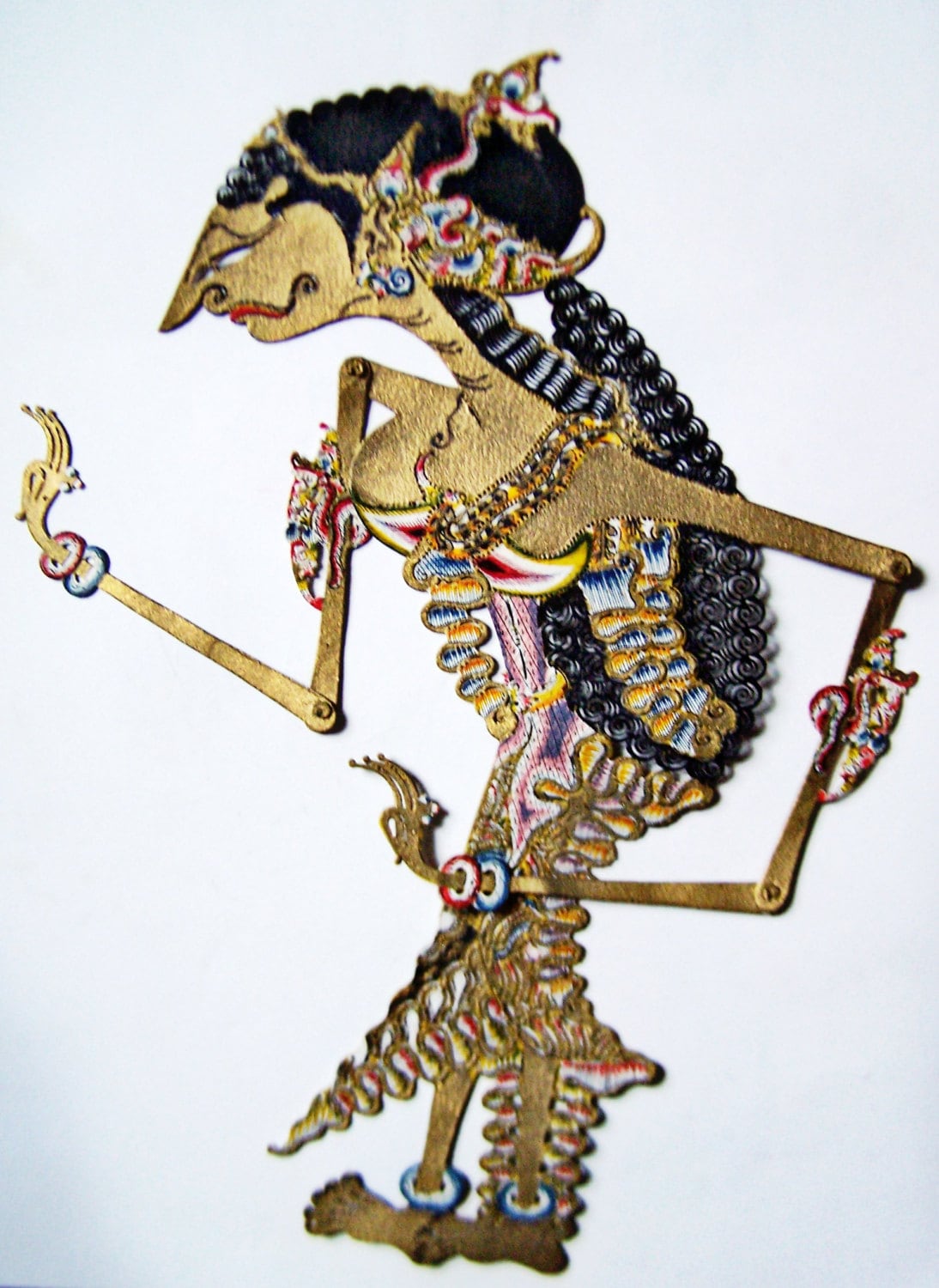
Over time, the epics became distinctly Javanese versions of the original Indian texts and by the tenth century they were recited in the form of wayang kulit as court-based theater. For centuries, Hinduism was the predominant religion of Java. The Hindu stories, Mahabharata and Ramayana, originated in India possibly as far back as the eighth century BCE and reached Java around the eighth century CE. Whatever the circumstance, wayang stories always present philosophical ideas and poignant messages.

“Good” characters may posses certain negative traits and likewise, not all the “bad” characters are entirely immoral. The means to those ends are not always clear cut. They are about the pursuit of living a virtuous, noble life and the search for meaning. The stories are about good versus evil, but more than that, they contemplate the existential struggle between right and wrong. Wayang stories involve moral and ethical dilemmas faced by the characters in their journeys through life, love, and war. The two most popular and commonly performed of these epics are the Mahabharata and Ramayana. The term wayang purwa refers to four cycles of epics, which began to be standardized by the royal courts of Central Java in the eighteenth century. Wayang Purwa: Repertoire and The Cast Of Characters This exhibit focuses on the style of wayang kulit from Surakarta, a Central Javanese city commonly referred to as Solo. The tradition of wayang kulit has been performed in villages, cities, and royal courts for hundreds of years and is very much alive today. Traditionally, performances last all night, beginning in the evening and ending at dawn and are always accompanied by a gamelan orchestra, creating a dynamic, multi-sensory experience. Each show teaches important morals and involves serious philosophical contemplation, while entertaining the audience at times with roaring humor and special action-packed scenes.


Traditional performances are based on classical literature. Yet, more than mere puppetry, this is one of the highest forms of art in Indonesia. Wayang kulit performance of Indonesia is among the greatest story-telling traditions in the world and lies close to the heart of Javanese culture. The following information was prepared for the award-winning exhibition, Dancing Shadows, Epic Tales: Wayang Kulit of Indonesia, which was developed by the Museum of International Folk Art in Santa Fe, New Mexico and was on display from Mathrough March 14, 2010.


 0 kommentar(er)
0 kommentar(er)
